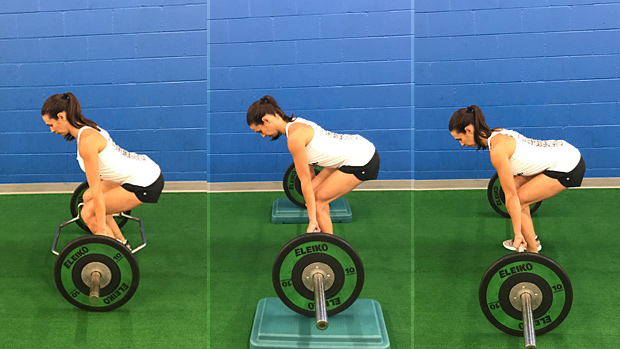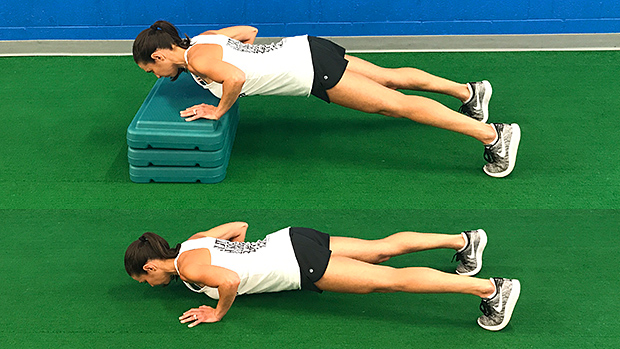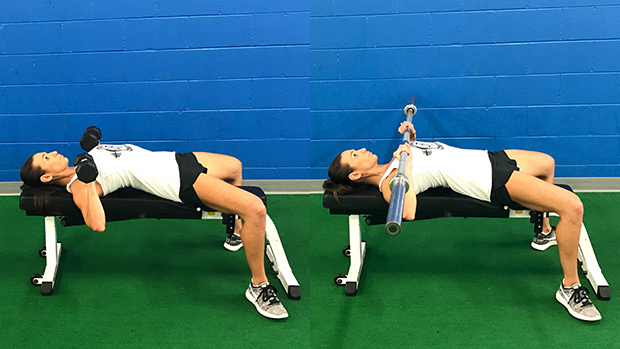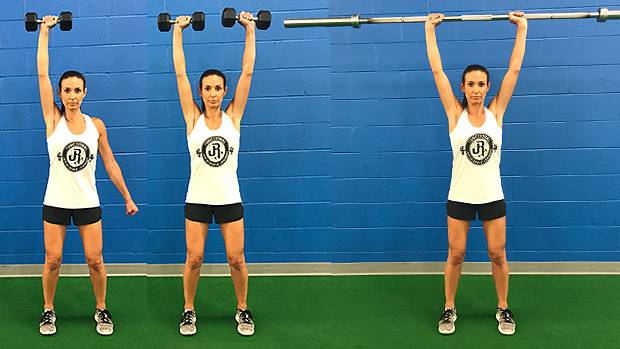6 basic movement patterns
Our bodies – for all their individual differences – have 6 basic movement patterns.
If you want to be athletic, strong and healthy, a training programme should include:
- Squat
- Leaning
- Lunge
- Press
- Pulling up
- Weight Carry
But there is one problem: certain exercises that work on these patterns are not available to everyone. At least not immediately. For example, if you start with a squat variant that does not suit you personally (due to physique, level of fitness, existing injuries, etc.), nothing good will come of it.
So, if you plan to train long and successfully, do not get hung up on specific exercises, but choose the movements that are optimal for you. These will help you avoid more injuries and get stronger, improve your health and fitness.
1 – Squat
The first thing you think of when you hear the word ‘squat’ is the classic back squat. But this is the only way to squat and not everyone can do it in their first workout. Moreover, not everyone needs this option. But does everyone need to practice the squat pattern by working all the muscles they need and improving mobility/stability throughout the body – torso, pelvis, knees, ankles? Absolutely.
People differ in physique, so everyone needs a different type of squat, especially if the goal of training is to develop strength, power and muscle mass.
Squat Progression
Here’s a basic progression for determining the best type of squat, starting with simplified versions and progressing to more advanced ones:

1, 2

3, 4
- Deadlift squat
- Cup squat
- Chest squat
- Back barbell squat
As you can see, the traditional barbell back squat is at the very end, after the front squat. Why? And look at what people do in their gym in the squat frame with huge weights on their back! What happens more often – do they demonstrate a perfect technique or do they cripple themselves inexorably? Yes, yes, they too need to bounce back and start by squatting without weights.
I’ll say more, a full squat with the bar on the back will not suit everyone even after training. Everyone needs to find the ‘heaviest’ kind of squat they can technically handle. Your goal is to get the most useful load for muscles with minimum stress on joints. Once you have mastered one variant, move on to the next, choosing the best one for you personally.
2 – Bend
This is one of the most important patterns that strengthens the back and protects the lower back from injury; but many people neglect it. Don’t equate this pattern with just a deadlift – not every incline is a deadlift and not every pull is a bend. Someone categorically refuses to do stanai because of fear of back injury and what do you end up with? They do not have a very useful oblique pattern at all in their programme, which causes lower back pain and more frequent injuries. Think about it: how many times do we bend over during the day outside the gym? The correct answer is: it’s impossible to count. That’s why this movement needs to be practiced.
Progression in the bend
You need to progress extremely slowly with this pattern, teaching the body the correct movement.

1-4

5-7
- Romanian deadlift without weights
- Romanianka with barbell
- Romanianka with barbell
- Standing with barbell
- Standing with trapeze bar
- Partial deadlift with barbell
- Classical deadlift
Again not all variants are available because of body constitution. Alas, not everyone is able to do the classical standing position from the floor, keeping the spine in a neutral position. And this is the norm! If this is your case, choose the variant of the standing position from the middle of the list: you will be healthier.
3 – Lunge
One-leg exercises are another undeservedly forgotten pattern for two reasons: firstly, the working weight is not as large as in the basic squat. Secondly, the lunges are quite difficult. If you have any weak links or motor limitations, the lunge will immediately reveal them.
This is one of the “primitive” patterns, it is how we started walking: first we crawl, then we get on all fours, get up and do the first step – lunge.
The more advanced variants of unilateral exercises are simply necessary if you want to achieve maximum strength and the best sports performance, while preventing injury due to unbalanced muscular development.
Progression lunges
Don’t try the traditional forward lunge straight away – it’s an advanced variation. Without prior training you will only achieve knee injury and lower back pain.

1-2

3-4

5-6
- Scissors (lunge squat)
- Scissors with back foot on elevated position
- Scissors with front leg on elevation
- Reverse lunge
- Lunge lunge
- One-leg deadlift
When practicing a movement pattern, balance the program so that it contains both knee-dominant exercises (scissors) and pelvic-dominant exercises (Romanian).
4 – Press
The bench press pattern is certainly overdoing it nowadays: every beginner rushes to the bench as soon as he enters the gym. However, not all experienced bench pressers know how to perform a good old-fashioned push-up. Although the movements are quite similar, they give different static and dynamic load on muscle complex of the shoulder girdle.
If you start with the classic push-up, you will achieve more in the more advanced variants of the bench press. Once you have mastered the bench press pattern in the horizontal plane, move on to vertical presses.
Progression in the bench press
The shoulder is the most mobile joint of the upper body and works in several planes, so divide hand presses and pull-ups into horizontal and vertical.
Horizontal bench press

1-2

3-4
- Push-up with hands on top
- Push-up
- Dumbbell press
- Bench press
- Vertical press

- Dumbbell press with one hand
- Dumbbell press
- Bench press
Don’t view bench presses as isolated exercises for the arms – the whole body works. Successful performance depends on a solid base formed by the legs, pelvis and core stabilisers. The last pattern will help to strengthen them.
5 – Pulling
And this pattern is neglected by many (excessive use of presses), which leads to imbalance in muscular development, and then – to shoulder and back injuries. For strong and healthy shoulders, deadlift is much more important than bench presses, but most athletes don’t think about this.
To develop fully and reduce the risk of injury, pay more attention to horizontal pulling and then move on to vertical pulling.
Progression in pulling
Start with a fixed body position and then master more advanced variations where you need to engage your stabilisers. All these pulls will add to your health and help you progress in other exercises.
Horizontal pull

1-2

3-4
- Chest supported dumbbell pull
- Lower bar pull-up
- Dumbbell bent over backboard
- Weight pulling backwards
- Vertical pull

- Upper block lifting
- Power pull-up
- Pull-up
When you have mastered all types of pull-ups, you need to balance them in your programme: many people benefit from a 2:1 ratio of horizontal to vertical pulls – this takes into account the total number of repetitions in a training week.
6 – Weight Carrying
The ability to move in space with a load in your hands (smoothly, confidently, with full control of the movement) is extremely useful and positively transferable to both normal walking and sports events like sprinting or shuttle running.
Because of the asymmetric load of carrying, the body stabilizers have to remember their primary purpose of keeping the body together and resisting the forces pulling in different directions.
This is why the programmes of competent trainers always include some variant of farmer’s walk or pulling/pushing of a loaded sledge.
Of course, as in all previous cases, proper progression is necessary, you cannot start with sprints or farmer’s walks with maximum weight right away. Learn to walk first, then run.
Progression in carrying
Again, practice normal walking first. Do not aggravate motor dysfunction.

- Walking
- Farmer’s walk
- Farmer’s walk with weight in one hand
- Farmer’s walk with a weight in front of you (at the elbows – a variation of the Zercher hold)
- Farmer’s walk with one arm above head
- Farmer’s walk with weights over head
Some variations will be limited by grip strength, others will strain the body stabilisers more. Master these steps and then invent your own variations using the tools at hand. Any type of weight carrying for time, distance or speed will benefit you.
